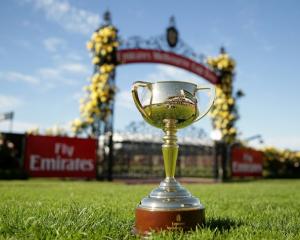
A Lower Hutt principal who is weighing up whether to continue with the school lunches programme next year says there are a lot of unknowns about the new scheme.
Naenae College will now have to fork out the costs for distributing the food to its students and pay for the price of clean up each day.
The free food was something Year 10 student Nadia Hussain said helped the pupils get through the day.
"It's really important because if you don't have food, your brain will stop working and stuff. For me, it's hard to concentrate if I don't have anything to eat the whole day," Hussain said.
Year 10 student Rahera Rolleston said without them, students would go hungry.
"Some of the students here that don't take lunch from home come here to eat, so if that gets taken away they're either going to have to make some time for them to do it either before or after school or just try and make the day without eating," Rolleston said.
Alejandra Coby-Nicholas agreed they would have to stay up past 1am making their lunch.
"A lot of students use food to be able to focus in class and if they don't have that they'll either move away or ruin their sleep schedule to be able to make food for themselves which will impact their learning in a negative way," Coby-Nicholas said.
Since 2019 more than 220,000 students across the country were fed under the Ka Ora Ka Ako lunch time scheme.
Due to the $107 million worth of cuts announced this year to the programme the current supplier says it can't meet the new budget of $3.50 per student.
Principal Chris Taylor said the school would also have to find a way to pay for distributing the food to its students and clean-up costs.
And it has left him with a lot of questions.
"I don't know yet whether they're hot, cold anything about them, what sort of containers they are or even where that'll be dropped off. You know the management of healthy foods, do we keep it hot? do we keep it cold? None of those things have been made clear to us."
Taylor has until November 25 to say whether the school will stay in the programme or opt out.
He estimates the extra responsibilities on the school will mean it will have to fork out $60,000 a year.
It was a process Taylor said was not as simple as bringing in members of the community to help save on costs.
"So anyone who comes and works with children has to be police vetted, anyone who comes and works with children has to have you know a certain level of rigour applied to them in order to be safe to look after them so yes we could bring the community in but that does come with a layer of added complication," Taylor said.
If senior pupils got involved, it would not count towards NCEA credits either but instead would be seen as acts of services and working for the community.
But he said bringing in students to set up and clean up has its complications too.
"I'd prefer to have someone come in who actually does that for us because it just removes the 'who would supervise those kids, what if the kids are away?' - you know from a health and safety point of view who looks after them in that space?," Taylor said.
The Ministry of Education website states next year meals will be delivered in aluminium containers with soft plastic covers.
The school lunch collective will have a three week rotation cycle set each term which will have both hot and cold meals.
So far Taylor is leaning towards joining the scheme again because, he said, any food is better than no food at all for the kids, but will seek feedback from the school's community for their thoughts.













